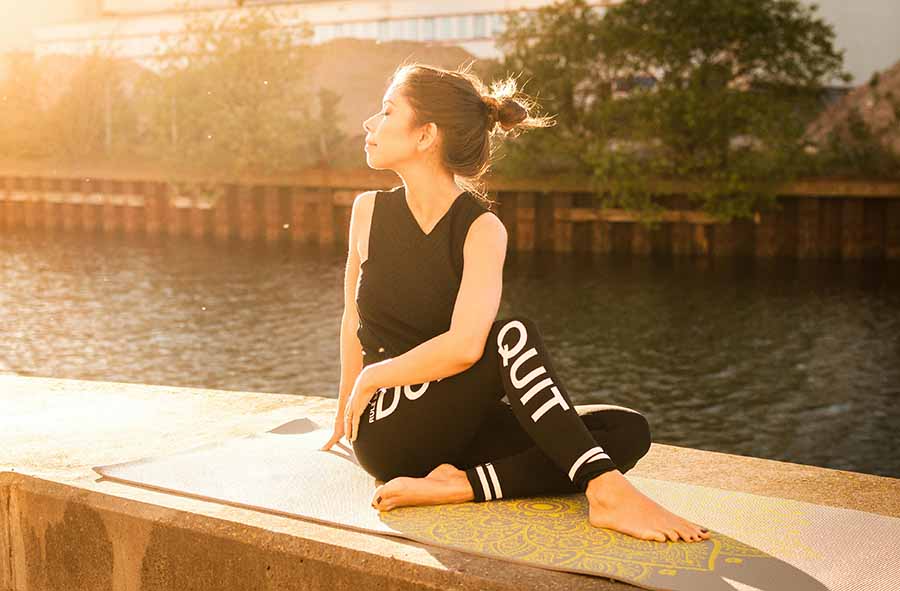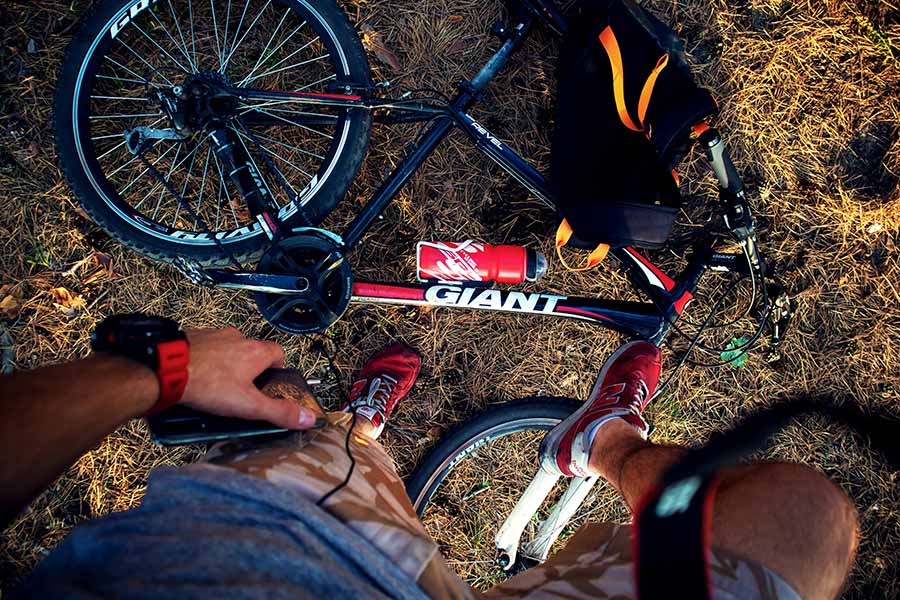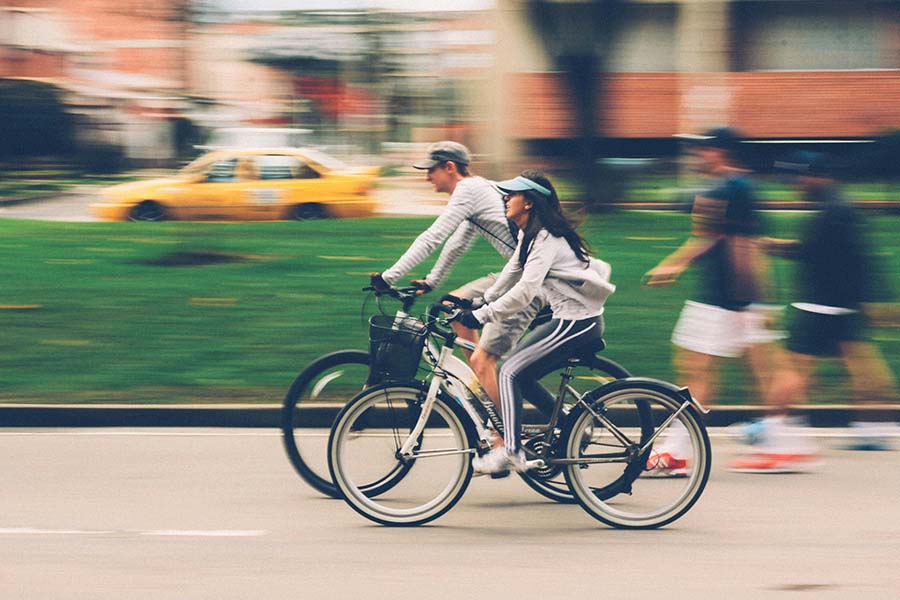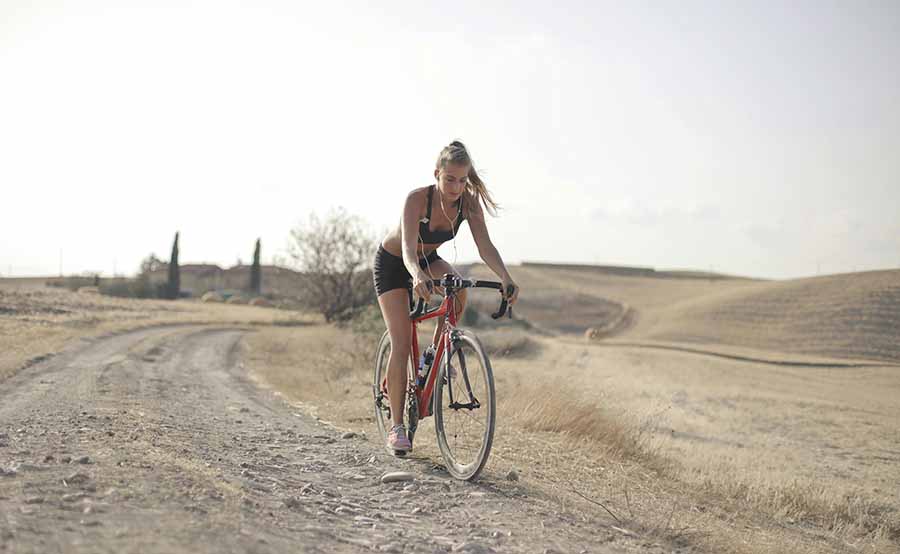The practice of yoga is about balance, connection of the mind and body, and a sense of being present in the moment. This is achieved through various poses and breathing exercises that will benefit indoor and outdoor cycling enthusiasts in their performance, mental focus, and in training plans. The flowing combination of strength, balance, stretch, and core activation make them a great dynamic warm-up before a ride. If you’re riding more than four times a week, it might well be better to swap one of those rides for a yoga session. Here’s why…
1. Improved Core Strength
Yoga is a great way to improve postural alignment and functional core strength. A strong core enables cyclists to maintain proper spinal alignment and posture – even when fatigue starts to set in on a long ride.
Many of the fundamental yoga poses are rooted in developing inner-abdominal pressure while maintaining neutral spinal alignment. This is beneficial to cyclists as it decreases the pressure on the shoulders and wrists that comes with riding postures.
A strong core is also beneficial as it decreases the risk of lower back injuries. Lower back pain is a common challenge amongst cyclists, especially those who spend long hours in the saddle, and this is often the result of poor core engagement and postural support.
2. Increased focus and lower levels of tension
Physical, emotional and mental tension from the demands of life and poor riding postures drains energy. For cyclists this has an impact on pedal efficiency and form. A lack of mental focus or too high of stress levels can decrease a riders ability to push optimal power levels. This makes a ride that may have previously been easy, seem incredibly challenging.
Yoga sessions can do wonders to increase mental acuity, decrease stress, and reduce the negative impact of muscular tension on the body. Whether it’s through a purposeful focus on breathing, the use of a mantra, or simply the calming nature of the practice, yoga sessions will improve cyclists focus on the bike.
3. Promotes Total Relaxation
Ah – we cyclists can be busy people. Fitting in work, family life, the general chores and admin that most people use their Saturday mornings for, and lots of hours on the bike can sometimes feel like a lot to balance.

Most Yoga classes end with a short meditation – this is just a few moments to lie back, relax, breathe, and listen to your body.
Of course, you could just promise yourself you’ll do this once a day, or once a week, before you go to sleep – but will you? Dedicated time at the end of a session will hold you to that promise.
4. Reduced Risk of Injury
When yoga flows are used as a means of “prehab” training, common injuries in the back and legs are less likely to occur. Because yoga approaches movement from a place of balance the common imbalances experienced in riding can be addressed and improved.
In cycling the leg never reaches full extension, thus giving the hamstrings little opportunity to fully lengthen. Over time this reduces the elasticity of the hamstrings and puts it at greater risk of strains and tears. Poses such as Standing Forward Fold aim to increase flexibility of the hamstrings for riders.
5. More Efficient Breathing
The yoga breath is slow, controlled, and asks the breather to focus inward. This type of breathing is opposite of the rapid breath taken by many athletes during higher intensity bouts of exercise. The ability to slow the breath down and focus inward at will allows participants to feel release from tension and control over their actions.
The ability to breathe better makes cyclists more efficient in their performance and allows quicker and more controlled recover after hills and other high intensity riding elements.
6. Improves Flexibility
The cycling position can also put stress on your lower back and neck, as you bend over the handlebars. This can cause certain muscles – such as those in the glutes, quads, and hamstrings – to tighten up. Unless your body is perfectly symmetrical in terms of strength, length and flexibility – which is very rare, most people have one stronger, shorter or more flexible leg – this can cause rotation in the hips, which will worsen over time and become uncomfortable.
A Yoga class will give you the opportunity to stretch out the tight areas – and you’ll often be asked to look for in-balances, areas where one side is tighter than the other.



 Trek is one of the most well-known names when it comes to cycling. This is because many athletes have used bikes created by Trek and broken world records. Lots of professionals like to use this bike because it is known for having exceptional engineering. Many fans of the brand find that bicycles created by Trek are able to provide them with an extra edge when they are competing in major competitions.
Trek is one of the most well-known names when it comes to cycling. This is because many athletes have used bikes created by Trek and broken world records. Lots of professionals like to use this bike because it is known for having exceptional engineering. Many fans of the brand find that bicycles created by Trek are able to provide them with an extra edge when they are competing in major competitions.



 Pinarello is a brand that started in Italy in the early twentieth century. Like
Pinarello is a brand that started in Italy in the early twentieth century. Like 






